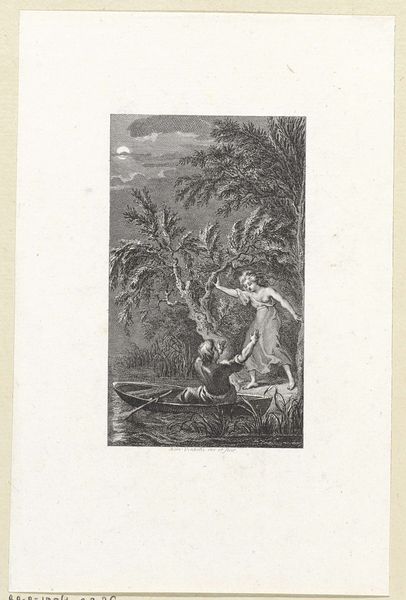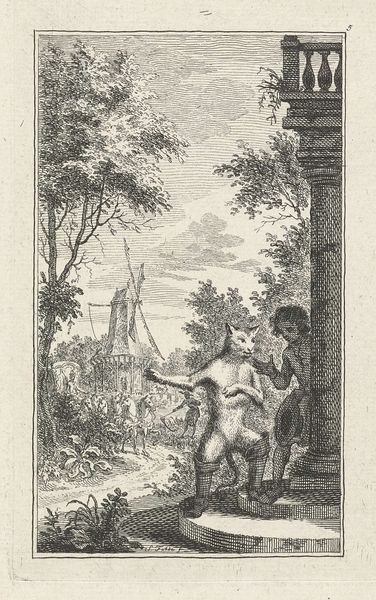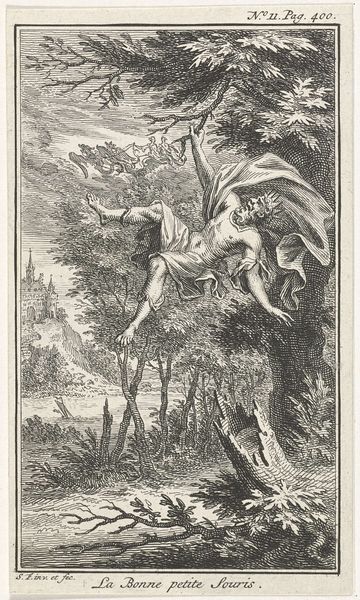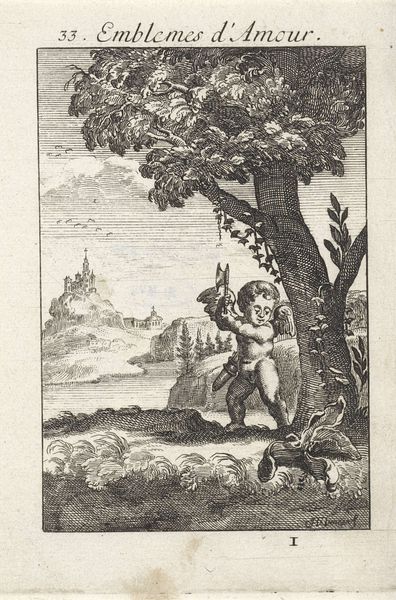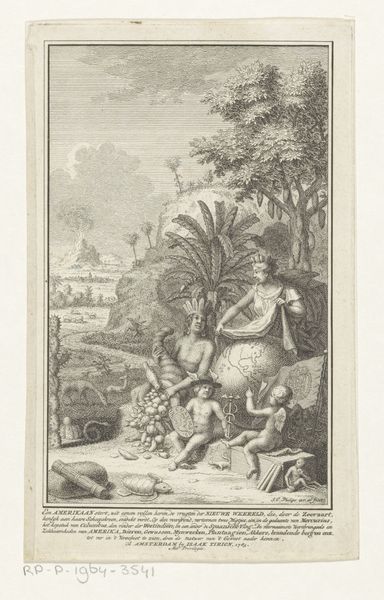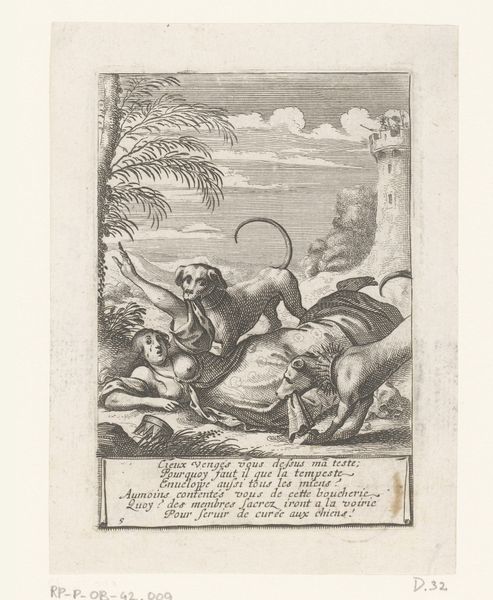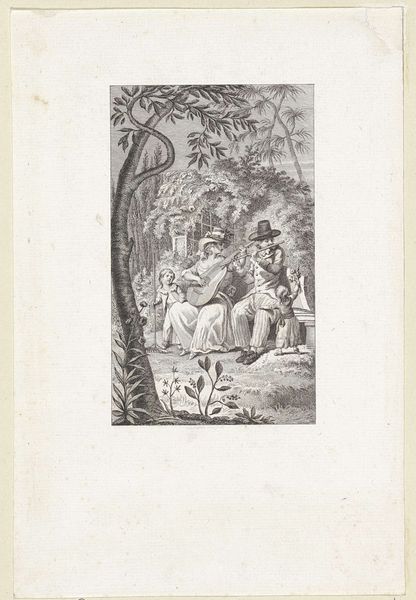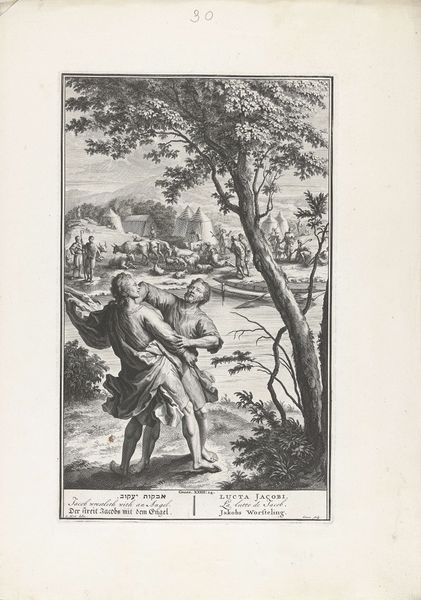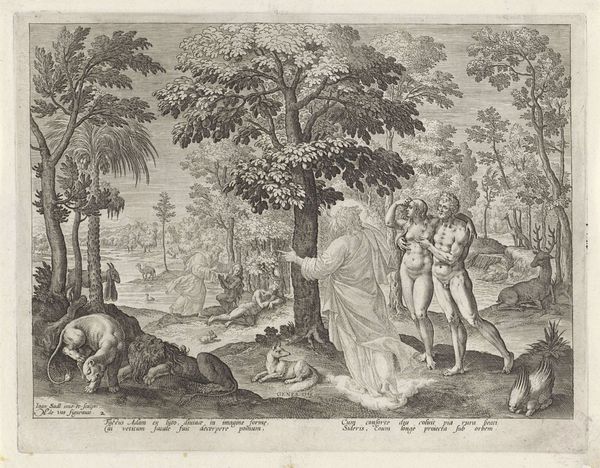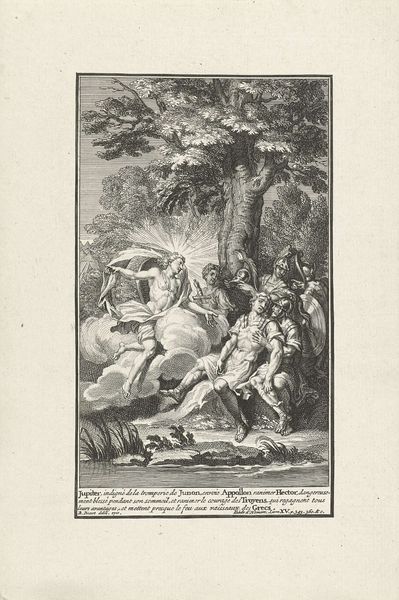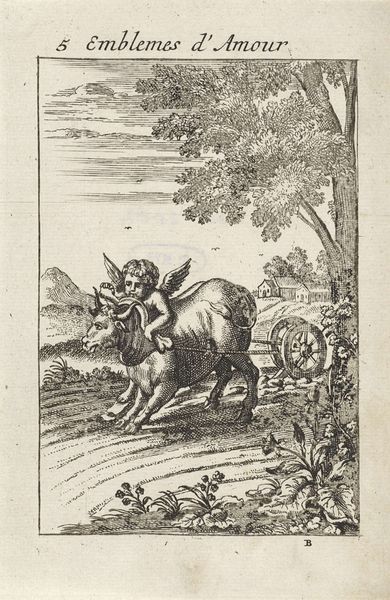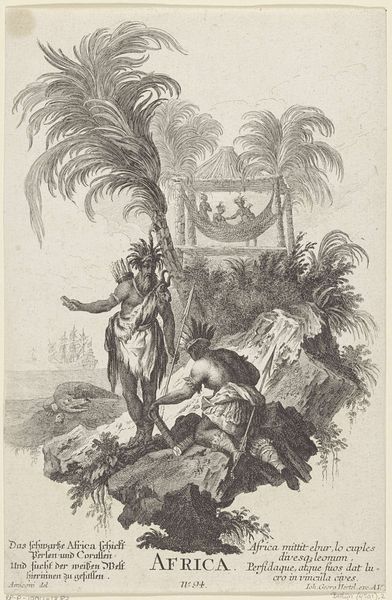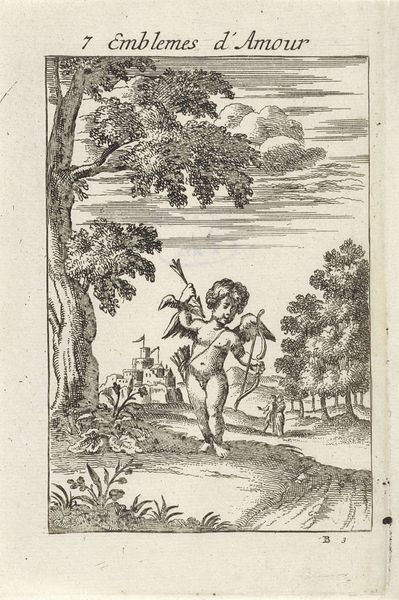
print, engraving
#
baroque
# print
#
old engraving style
#
figuration
#
line
#
history-painting
#
nude
#
engraving
Dimensions: height 359 mm, width 220 mm
Copyright: Rijks Museum: Open Domain
Joseph Mulder created this print, "Adam and Eve in Paradise," sometime before his death in 1718. The artwork is made using engraving, a printmaking technique where lines are incised into a metal plate, which then holds ink and transfers the image to paper. Looking closely, you can see the crisp lines that define the figures and landscape. The material qualities of the print, its texture and tone, all depend on the engraver’s skill in manipulating the metal. The image is not just a picture, but also the result of skilled labor. Mulder would have used specialized tools to carefully cut into the plate, and this process involved significant time and precision. Prints like this were part of a burgeoning media landscape. They allowed images and ideas to be disseminated widely, reaching audiences beyond the elite. So, while the image depicts a timeless biblical scene, the material and method of its creation are firmly rooted in the social and economic context of its time. It serves as a reminder that art is always connected to the world of labor, production, and consumption.
Comments
No comments
Be the first to comment and join the conversation on the ultimate creative platform.
